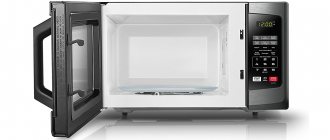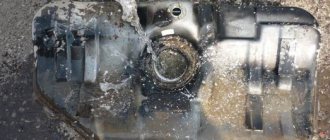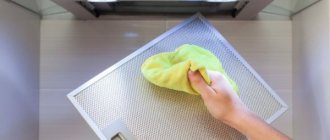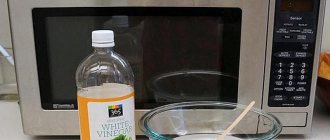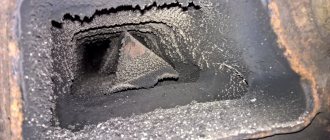A microwave oven is an indispensable thing in any kitchen. It defrosts food, prepares food, and reheats ready-made meals. Frequent daily use leads to rapid contamination of the internal surfaces of the unit, so it must be washed frequently. Not every housewife has time for this, and every housewife will not refuse to learn how to clean the inside of a microwave. A quick method that does not require much labor will be useful to everyone. There are several such methods, and they all involve the use of the most common means.
For one of the cleaning methods you will need lemon Source nbcnews.com
How to clean a microwave with citric acid
The method copes with medium and heavy dirt.
What do you need:
- microwave-safe bowl;
- 2 glasses of water;
- 1–2 tablespoons of citric acid;
- sponge, cloth or paper towel.
How to do
Pour water into a bowl, add citric acid and stir. Place in the microwave and turn it on at full power for 10 minutes.
After another couple of minutes, open the door, take out the bowl and wipe the inside of the appliance.
Properties
The liquid with a sour taste and pungent odor has antibacterial properties, which is why it is used for cooking or canning food. Acetic acid prevents the growth and reproduction of dangerous microorganisms - salmonella bacteria, E. coli, mold, dust mites and many others. Therefore, this disinfectant is used in everyday life no less often than in cooking:
- as a cleaning agent - removing traces of adhesive tape on plastic or glass, removing rust, wax residues from wood or fabric, stains from carpets;
- as a detergent - removing various types of dirt from pots, refrigerators, microwaves, dishes;
- to remove limescale – on metal and ceramic surfaces;
- deodorizing the room - neutralizing odors appearing in food containers, refrigerators, trash cans, and on cutting boards after cutting “fragrant” foods;
- to remove stains on clothes.
Using acidic liquid in everyday life has a number of advantages:
- Safety - after treating a table, window sill or other object in the house, there is no need to worry that a child or pet will touch it. This is the difference between vinegar and special products, particles of which (if not rinsed with water enough) enter the body and can cause poisoning. When producing detergents, various fragrances and fragrances are added to them, which often contribute to the development of contact dermatitis - allergies. Such a nuisance is eliminated if you use vinegar during cleaning.
- Versatility - with the help of an acidic product you can disinfect almost all household items.
- Cost-effective – vinegar, while not inferior in cleaning properties to the finished product, is much cheaper.
REFERENCE!
For household purposes, it is advisable to use a product obtained by diluting synthetic acetic acid (table 5-9% acid solution). Natural vinegar is more expensive and is better left for cooking.
We described in this article how to clean a microwave oven from carbon deposits and grease at home using other methods.
How to clean a microwave with lemon
Citrus will help get rid of not only medium-sized stains, but also unpleasant odors.
What do you need:
- microwave-safe bowl;
- 1–2 glasses of water;
- 1 lemon;
- sponge, cloth or paper towel.
How to do
Pour water into a bowl and dilute the juice of a whole lemon in it. Cut the rest of the fruit and also put it in a container. Heat everything in the microwave at full power for 10-15 minutes. Leave the bowl inside for 5 minutes, then wipe down the oven.
Safe products for cleaning different chambers of microwave ovens
To clean your microwave using vinegar, inquire about the surface type of the microwave's interior. The inside of the microwave is upholstered in stainless steel, ceramic or enamel. Depending on this, the cleaning product and method are selected:
- Stainless steel. Fat sticks strongly to this type of coating. Stainless steel is difficult to clean because powders and substances containing acid are not used. Powder will cause scratches, and acid will make the surface dark and unattractive.
- Enamel is characterized by a dense coating that does not have pores. Fat and food debris do not penetrate into the micro-holes, so removing them is easy. Do not use abrasive chemicals that will corrode the surface. Excessive mechanical actions spoil the surface layer.
- BIO-ceramics is a type of surface that has both the strength of steel and the density of enamel. There are no restrictions regarding the choice of means to improve the condition of the camera. A soft cloth or sponge is used as cleaning material.
Author's note
Kirilova Olga
Before you start cleaning the chamber of a certain microwave model, read the instructions that describe the care rules.
As a result, the types of coating of the microwave oven chamber are determined, which are cleaned with a solution or vinegar concentrate. Contraindications apply to steel coating. Enamel and BIO-ceramics undergo this type of cleaning. You can quickly wash the inside of the microwave with vinegar to get rid of odors and residual grease.
How to clean a microwave with vinegar
It is able to remove stubborn plaque, including fatty deposits.
What do you need:
- 3 tablespoons table vinegar;
- microwave-safe bowl;
- 1–1½ glasses of water;
- sponge, cloth or paper towel.
How to do
Before cleaning, it is better to open the window so as not to suffocate from vinegar fumes.
Pour vinegar into a bowl of water. If the contamination is very strong, you can mix the liquids in a 1:1 ratio, for example, ½ glass of water and ½ glass of vinegar. Heat the solution in the microwave for 5–10 minutes at maximum power.
HGTV YouTube channel
Wait 10 minutes before opening the door. After such a vinegar bath, it will be enough to remove the dirt with a sponge.
Precautionary measures
When using vinegar to clean your microwave oven, you must take the following precautions:
Do not clean the microwave while it is on.- If you use vinegar for cleaning, you must ventilate the room well or use a hood.
- Wear rubber gloves and a gauze bandage on your face.
- After washing, wipe the surface with hot water to remove any remaining vinegar and wipe dry.
- Do not place jars or plates with liquid product on the oven lid to prevent liquid from getting inside the device.
Failure to comply with the precautions may cause harm to health or damage the device.
What to do to keep your microwave clean
- Thaw food in deep bowls to avoid staining the glass tray of the microwave.
- Cover food with a special plastic cap, cling film or parchment paper when reheating.
- Do not place foods that may explode (such as whole chicken eggs) in the microwave.
- After use, wipe the walls of the microwave with a paper towel and leave the door open for a couple of minutes to remove the smell and remaining moisture.
Cleaning in other ways
If you don't want to breathe in vinegar or detergent while the microwave is "self-cleaning", use one of the following methods.
With laundry soap
Laundry soap decomposes grease well. Before cleaning the inside of the microwave oven, you need to grate it, add warm water, let it sit and stir. The solution should be very saturated, without any undissolved pieces of soap.
Preparing a cleaning solution Source today.ua
Using a sponge, apply it thickly to the inner walls of the chamber, close it and leave for about an hour. Then wash it with a damp cloth along with the plaque, rinsing it to remove soap as often as possible. Do this until soap suds stop flowing from the napkin.
Advice! The not-so-pleasant smell of laundry soap should be allowed to dissipate before using the oven for its intended purpose.
With glass cleaner
Liquid glass cleaners, unlike powder, soap and dishwashing detergents, do not form a lot of foam and do not leave streaks, and they handle dirt just as well. To clean a microwave oven, dilute them slightly with water, soak a sponge in the solution and wipe all dirty surfaces, going over the dirtiest areas several times. Dried stains and splashes are moistened more abundantly. When they begin to dissolve, wipe the chamber with a clean damp cloth, rinsing it until the smell disappears completely.
The glass cleaner is suitable for cleaning the oven inside and outside Source akamaized.net
Pros and cons of the procedure
Vinegar microwave cleaning has a number of advantages and disadvantages.
Pros:
- Availability, cost-effectiveness. Vinegar is an inexpensive product that can be purchased at almost any store.
- Effective in combating pollution. Vinegar breaks down fats well, and they dissolve more easily in water.
- Safety. With the exception of stainless steel, most microwave ovens respond favorably to vinegar.
- Disinfectant action. Vinegar helps eliminate mold and kill most germs that accumulate on appliance surfaces.
- Hypoallergenic. The product is relatively safe for health, does not poison the body with toxins, does not pollute the environment, and reduces the risk of allergic reactions.
One of the disadvantages of vinegar as a cleaning agent is its pungent odor. To eliminate it, it is enough to ventilate the room.
Vinegar can cause skin irritation. Therefore, it is better for people with sensitive skin to work with vinegar solution in rubber gloves.
Caring for the device
- follow the operating instructions for electrical appliances, process only those products and in containers that are suitable for use in the stove;
- Do not block the ventilation opening of the device with various objects and do not move the device close to the wall;
- When placing food in the chamber, cover it with a special lid;
- If splashes or food particles get on the surface of the device, remove all contaminants immediately.
Like any other household appliance, a microwave oven requires constant care and regular wiping of its surfaces after each meal preparation. This is a prerequisite for preserving not only the appearance of the electrical appliance, but also its functionality.
Features of cleaning a microwave depending on the type of internal coating
Contamination of the inside of a microwave oven with grease due to frequent use is a natural phenomenon. However, when choosing the most suitable option for removing contaminants, it is necessary to take into account the effect of the product used on the inside of the device. It is important that the procedure does not result in destruction of the protective layer.
If the inner surface is covered with enamel, it is not recommended to use vinegar too often. Baking soda also quickly removes dirt; you can use it.

